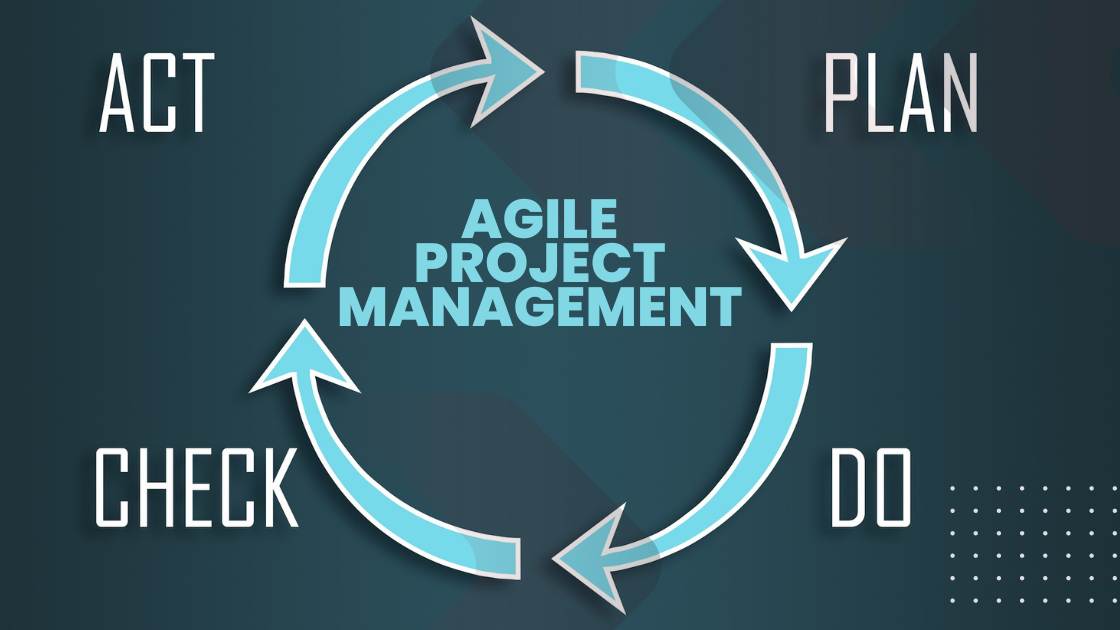Agile project management has become a game-changer for businesses across various industries. With its iterative and adaptive approach, Agile methodology enables teams to respond effectively to changing requirements and deliver high-quality products in a timely manner. In this article, we will explore how Agile project management can transform your business, providing a competitive edge in today’s dynamic market.
In today’s fast-paced business environment, project management plays a crucial role in the success of any organization. It ensures that projects are delivered on time, within budget, and with the expected quality. However, traditional project management approaches, like the waterfall methodology, have certain limitations that can hinder the progress of projects.
Traditional Project Management vs. Agile Project Management

Traditional project management follows a linear and sequential approach, where each project phase is completed before moving on to the next. This approach often lacks flexibility, as changes are difficult to incorporate once a phase is completed. On the other hand, it offers a more iterative and collaborative approach, allowing for continuous feedback and adaptation.
| Aspect | Traditional Project Management | Agile Project Management |
|---|---|---|
| Approach to planning | Detailed upfront planning | Iterative and adaptive planning |
| Project scope | Fixed scope | Flexible scope |
| Documentation | Extensive documentation | Minimal but sufficient documentation |
| Change management | Change is difficult to accommodate | Embraces and welcomes change |
| Project control | Emphasizes control and adherence | Emphasizes collaboration and empowerment |
| Timeframes | Predictive and fixed timelines | Iterative and timeboxed iterations |
| Communication | Formal and structured | Informal and frequent |
| Team structure | Hierarchical team structure | Self-organizing and cross-functional team |
| Customer involvement | Limited customer involvement | Collaborative customer involvement |
| Risk management | Comprehensive risk planning | Ongoing risk identification and mitigation |
| Deliverable frequency | Deliverables at project completion | Frequent deliverables throughout the project |
| Metrics and reporting | Progress measured against plan | Progress measured by value delivered |
| Decision-making authority | Centralized decision-making | Distributed decision-making |
| Emphasis on adaptability | Low | High |
Understanding Agile Project Management
Agile methodology is a popular approach in software development that emphasizes individuals and interactions, working products, customer collaboration, and responding to change. Business ideas with little investment for entrepreneurs can benefit from Agile’s iterative approach, which allows for frequent releases and continuous improvement. Agile teams are self-organized and cross-functional, with defined roles like the Scrum Master, Product Owner, and Development Team.
Key Components of Agile Project Management
Sprint planning meetings are an integral part of project management, where the team collaboratively defines the goals and selects the tasks for the upcoming sprint. During the sprint, the team works on the defined tasks and holds daily stand-up meetings to track progress. At the end of the sprint, a sprint review takes place to gather feedback from stakeholders and make necessary adjustments for the next sprint. Continuous improvement is emphasized through sprint retrospectives, where the team reflects on the process and identifies areas for enhancement.
Advantages of Agile Project Management
One of the significant advantages of the project management is its flexibility. Agile teams can quickly adapt to changing requirements and market conditions, ensuring that the final product meets the customer’s needs. The iterative nature of Agile enables faster product delivery, allowing businesses to stay ahead of the competition. Moreover, Agile promotes increased customer satisfaction through regular feedback and collaboration, ensuring that the final product aligns with customer expectations. Additionally, Agile fosters enhanced team collaboration and communication, breaking down silos and promoting a sense of ownership among team members.
Implementing Agile Project Management
To implement this project management successfully, organizations should provide adequate training and education to the team members. Selecting the right Agile framework based on project requirements, such as Scrum, Kanban, or Lean, is essential. Adopting Agile tools and software can also streamline project management processes and improve team productivity. While Agile implementation may face challenges, overcoming resistance to change and addressing cultural barriers can help organizations harness the full potential of Agile projects.
Real-world Examples of Agile Project Management Success
Numerous companies have reaped the benefits of project management. For example, a leading software development company adopted Agile practices and witnessed a significant improvement in their time-to-market, enabling them to release updates and new features more frequently. Similarly, Agile principles have been successfully applied in non-IT industries like manufacturing and marketing, allowing businesses to respond rapidly to market demands and achieve better outcomes.
Agile Project Management Best Practices
To optimize project management, teams can break down tasks into user stories, which are specific units of work that provide value to the end user. Prioritizing and managing the product backlog is essential to deliver the most valuable features first. Regular communication and feedback loops with stakeholders and customers foster collaboration and ensure the project stays on track. Empowering the development team to make decisions and take ownership of their work enhances motivation and productivity. The best practices for Agile project management:
- Embrace the Agile mindset: This project management is not just about following a set of practices; it requires a shift in mindset. Embrace the Agile values and principles, such as customer collaboration, responding to change, and delivering working software incrementally.
- Form a cross-functional team: Build a self-organizing, cross-functional team with diverse skills necessary for project success. Include members from different disciplines (e.g., development, design, testing) who can collaborate and contribute their expertise throughout the project.
- Define clear project goals: Clearly define the project’s vision, goals, and objectives. This helps the team understand the desired outcomes and align their efforts accordingly. Use techniques like user stories, personas, and acceptance criteria to articulate project requirements effectively.
- Break work into iterations: Divide the project into smaller iterations or sprints. Each iteration typically lasts 1-4 weeks and involves planning, development, testing, and review. Breaking work into iterations allows for regular inspection and adaptation and helps manage complexity.
- Prioritize and manage the backlog: Maintain a product backlog, which is a prioritized list of user stories or requirements. Continuously collaborate with stakeholders to prioritize backlog items based on business value, urgency, and customer needs. Regularly groom the backlog to refine and update requirements.
Common Misconceptions and Challenges in Agile Project Management
Despite its advantages, Agile project management may face certain misconceptions and challenges. Some team members may resist the change from traditional methodologies, requiring proper change management strategies and education. Balancing flexibility and predictability can be challenging, as Agile aims for adaptability while meeting deadlines and milestones. Scaling Agile for larger projects requires careful planning and coordination. Overcoming cultural barriers and organizational resistance is crucial for successful Agile implementation. Here are some common misconceptions and challenges associated with this project management:
- Agile means no documentation: One common misconception is that Agile projects do not require documentation. While Agile emphasizes working software over comprehensive documentation, it still recognizes the importance of documentation. Agile projects produce just enough documentation to support the development process and provide necessary information for future reference.
- Lack of planning: Another misconception is that Agile projects lack planning. Agile projects do emphasize adaptability and flexibility, but they still require planning. Agile planning happens iteratively and incrementally, with short-term planning done at the beginning of each iteration or sprint.
- Fixed scope and timelines: Agile is often misunderstood as an approach without fixed scope or timelines. In reality, Agile projects work with a prioritized backlog of user stories and have fixed-length iterations or sprints. While Agile allows for changing priorities, it still adheres to timeboxing and strives to deliver value within each sprint.
- Resistance to change: One of the challenges in this project management is resistance to change. Adopting Agile requires a mindset shift for both the development team and stakeholders. Some team members may resist changes in roles, responsibilities, or processes. It is crucial to address these challenges through effective communication and fostering a culture of continuous improvement.
- Distributed teams and communication: Agile practices are designed to support collaboration and face-to-face communication. However, distributed teams can pose challenges to effective communication and collaboration. Overcoming this challenge requires leveraging communication tools, establishing clear communication channels, and fostering a collaborative virtual environment.
Conclusion
Agile project management can transform your business by revolutionizing how projects are executed. Agile methodology’s iterative and adaptive nature enables organizations to deliver high-quality products that meet customer expectations. By embracing Agile values and principles, empowering teams, and fostering collaboration, businesses can gain a competitive edge in the market and achieve long-term success.
FAQs
Q: What are the key principles of Agile Project Management?
A: The key principles include prioritizing individuals and interactions over processes and tools, delivering working products, collaborating with customers throughout the project, responding to change, and promoting self-organized teams.
Q: How does Agile Project Management benefit the development team?
A: It empowers the development team by fostering collaboration, enabling faster decision-making, and promoting ownership and accountability. It allows team members to adapt to changing requirements and deliver high-quality products efficiently.
Q: Can Agile methodologies be used in industries other than software development?
A: Absolutely! While Agile methodologies originated in the software development industry, they have proven to be successful in various other industries such as manufacturing, marketing, healthcare, and more. Agile’s principles can be applied to any project that requires flexibility, adaptability, and continuous improvement.
Q: How does Agile Project Management address changing requirements?
A: It embraces changing requirements by incorporating them into the project through frequent feedback and iterations. It allows for continuous collaboration with stakeholders and customers, ensuring that the project adapts to their evolving needs.
Q: Is Agile Project Management suitable for small businesses?
A: Agile Project Management can be highly beneficial for small businesses. It provides flexibility, faster time-to-market, and improved customer satisfaction. Agile’s collaborative and iterative approach allows small businesses to respond quickly to market changes and deliver valuable products efficiently.



